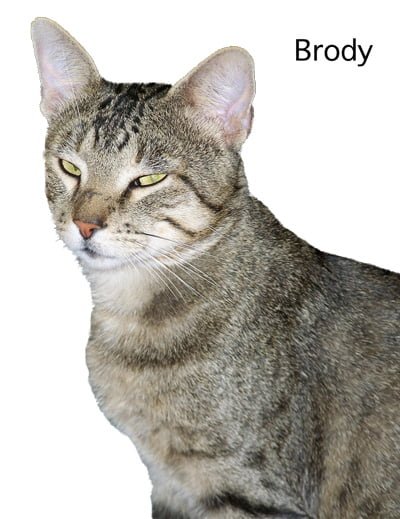FIV as an acronym for feline immunodeficiency virus. FIP is an acronym for feline infectious peritonitis. FIV is a retrovirus belonging to the lentivirus family. FIP is a member of the coronavirus group. What is the difference between a retrovirus and a coronavirus? They have a different mode of infection of the host. Whereas a retrovirus transcribes RNA to DNA and inserts itself into the host’s DNA to make copies, the coronavirus replicates itself by acting as a messenger RNA to make proteins facilitating making copies of itself. This is very technical but I don’t think I can make it less technical. The main point is that FIV and FIP are different viruses with different modes of replication.

FIV is related to HIV in humans i.e. AIDS. However, each disease is specific to their own host which means that cats can’t get HIV and humans can’t get FIV. FIV causes chronic immunodeficiency in cats. This means that it impairs the ability of a cat’s immune system to defend itself against foreign or abnormal cells that invade or attack it such as bacteria and viruses. FIP, in contrast, is a common disease of wild and domestic cats. The FIP coronavirus damages the minute blood vessels throughout the body which results in loss of fluid into tissues and body spaces.
It is estimated that 30-40% of all cats are positive for antibodies to feline enteric coronavirus which is the strain of virus causing FIP. It is also estimated that between 80-90% of cats in catteries test positive for antibodies to this virus. Only about 1% of cats exposed to feline enteric coronavirus will develop the disease called FIP.
In contrast, FIV has been found in cats throughout the United States and is believed to affect 2-4% of cats in the general population. Cats most likely to contract the disease are male outdoor cats in the age range 3-5. This confirms that cat bites between male cats who fight are a source of transmission as the virus is shed in saliva.

FIP is also spread from cat to cat but it requires close and continuous contact. The most common method of transmission of feline enteric coronavirus is between mothers and their kittens usually when the kittens are between five and eight weeks of age. Cats are more vulnerable in high-density facilities such as shelters and catteries.
The symptoms or signs of illness of a cat that has contracted FIV include fever and swelling of the lymph nodes. The white cell count is below normal. The cat may have diarrhoea, be anaemic and have skin infections. After the acute infection there will be a 12-month latent period during which the cat appears to be healthy followed by a chronic FIV infection with a range of unexplained signs of ill health. The range of symptoms include poor coat condition, lack of appetite, chronic recurring infections of the upper respiratory tract, bladder skin and eyes, constant diarrhoea, persistent eye problems, a fever that keeps on returning and seizures.

When a cat develops FIP there are two types described as ‘wet’ and ‘dry’, both of which are invariably fatal. In the wet form fluid begins to accumulate in the body spaces as mentioned; breathing becomes laboured as fluid builds up in the chest cavity. The cat has an enlarged abdomen. A cat might die suddenly from fluid in the heart sac. Other signs are: fever, dehydration, anaemia, vomiting and diarrhoea. The list is not comprehensive. In the dry form, fluid is not produced and a variety of organs are affected including the brain, kidney, pancreas and liver. The brain and eye will be affected in 60% of cases.
I’m not going to discuss treatment because that is the task of a veterinarian. I hope this page helps. I kept it deliberate straightforward and as short as possible because this is a technical subject.

SOME MORE ON CAT HEALTH DIAGNOSIS (BUT ALWAYS SEE A VET, PLEASE):

